Bill Featherston's Guardian Angel
Monday, August 10, 2009
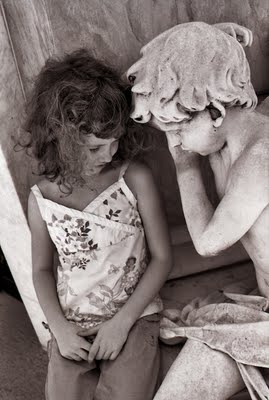 I met Vancouver painter (he lived in Brackendale outside Squamish, B.C.) around 1980. He was a jolly friend of Mac Parry who was the editor of Vancouver Magazine. Featherston was tall, well built and with his beard and baseball cap he reminded me of Hemingway. And he drank like Hemingway. One day he arrived and asked to borrow money from Mac. He told Mac that he had spent the night at a cheap local hotel after having had lots to drink. He woke up in the hotel minus his wallet. His penchant for fun and drinking he shared with other friends of Mac. One of them was Mati Laansoo who drank like a Baltic carp (he was from Estonia). It was about this time that Featherston had a one man show at the Bau-Xi Gallery (not mentioned in Featherston’s curriculum!) where he painted Mati and himself naked and the theme of the show was his hate for art critics. I remember that one of his paintings may have been called Kill The Art Critics. Nonetheless his show was given not bad reviews by the men he attacked so boldly. I observed this happy man and I wondered how he managed to drive from Vancouver, almost every day, all the way to Brackendale (one of the most dangerous highways in Canada) without a mishap. He taught at what was then called the Emily Carr College of Art. Alcohol and the Sea to Sky Highway could have never been happy partners. It was then that I found that the only explanation for Featherston’s survival (he died, not in a traffic accident, in May of this year) could only be the intervention of a most efficient and personal guardian angel. In fact I have used Featherston’s case as my proof for their existence. Since I can remember I had a little oval mirror the size of my hand (now) which had a brass guardian angel attached to it. It was pinned to my crib and then to all the little beds I had subsequently. The little guardian angel survived (and it hung behind my first daughter Ale’s crib) until 1969 when my Aunt Dolly visited us in Mexico City and saw the angel. She said it was her son Robin’s. She took it with her. I wondered and never asked how the little angel had come to be with me for so long. The little angel had been part of my life as much as a little almohadita (an ever so beautiful word that comes from the Arabic and means in Spanish a little pillow) which I had in my bed until I was 8. My mother told me that I was too old to cling to it and took it away. I grieved for days. Even now I cannot sleep unless I have two pillows- one for my head and one to hold. Rosemary stopped being jealous some 41 years ago. In the Philippines they call the pillow a man’s mistress. In pre-air conditioning times men (and women of shameless and questionable morals!) would sleep with a cooling pillow between their legs to ward off the sweat of legs caused by the stifling tropical climate of the Malayan islands. 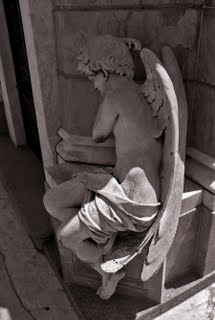 Somehow I survived losing my childhood bed companions and it did not become an issue until Brother Edwin Reggio, C.S.C. taught us at St. Edward’s High School sometime around 1958 the pyramid of life in its "upward" goal to complexity. He started with rocks, went to slime, viruses, bacteria, insects, fish, birds, reptiles, mammals and then told us that the jury was still out that asserted that only humans had souls. Brother Edwin accepted that “lower” orders might have some sort of rudimentary soul. The Catholic Church had no arguments with Darwin as long as we believed that at some point God intervened and injected a soul into some version of early man (and Eve). From man, Brother Edwin continued with his pyramid of souls. The next were the angels and he explained the different orders, Seraphin, Cherubin, Thrones, Dominions, Virtues, Powers, Principalities, Archangels and Angels. He also explained how man was a blend of body and soul, while angels where pure spirits with imperfect souls. Only God was the very soul of perfection. All this made sense to me then. Now I find it much harder to accept the existence of that Supreme Being, and more so One that is concerned about life in one little planet in a universe of planets and stars. I am too mathematical to believe to the contrary. I won't fall for Pascal's argument in his famous wager. I first started having doubts when I thought to myself in what stage of my mother’s life I would find her if she were in heaven when I died. It seemed that the answer was as ludicrous as trying to find out how Santa Claus managed to navigate down narrow chimneys.  I find it much easier to believe in the existence of those luminous but imperfect spirits that are angels. Bill Featherston might just wink at me from wherever he might be. Or, he could be fluttering his feathers.
On Photography - Sontag's Ecology Of Images
Sunday, August 09, 2009
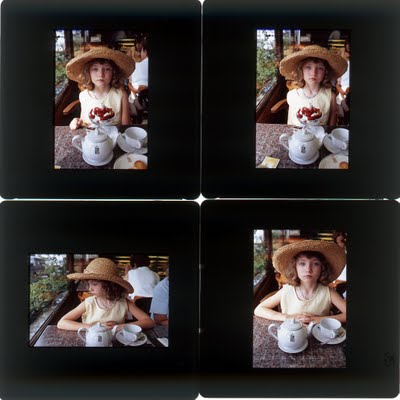 The powers of photography have in effect de-Platonized our understanding of reality, making it less plausible to reflect upon our experience according to the distinction between images and things, between copies and originals. It suited Plato’s derogatory attitude towards images to liken them to shadows – transitory, minimally informative, immaterial, impotent co-presences of the real things which cast them. But the love of photographic images comes from their being material realities in their own right, richly informative deposits left in the wake of whatever emitted them, potent means for turning the tables on reality – for turning it [in italics in book by author] into a shadow. Images are more real than anyone could have supposed. And just because they are an unlimited resource, one that cannot be exhausted by consumerist waste, there is all the more reason to apply the conservationist remedy, if there can be a better way for the real world to include the one of images, it will require ecology not only of real things but of images as well.
The powers of photography have in effect de-Platonized our understanding of reality, making it less plausible to reflect upon our experience according to the distinction between images and things, between copies and originals. It suited Plato’s derogatory attitude towards images to liken them to shadows – transitory, minimally informative, immaterial, impotent co-presences of the real things which cast them. But the love of photographic images comes from their being material realities in their own right, richly informative deposits left in the wake of whatever emitted them, potent means for turning the tables on reality – for turning it [in italics in book by author] into a shadow. Images are more real than anyone could have supposed. And just because they are an unlimited resource, one that cannot be exhausted by consumerist waste, there is all the more reason to apply the conservationist remedy, if there can be a better way for the real world to include the one of images, it will require ecology not only of real things but of images as well.
The last paragraph of Susan Sontag’s On Photography, 1977
I have photographed many sports once. It's after you photograph them that you become an expert and not before. Only practice at a sport with a camera will allow the photographer to realize when peak and important moments happen. In baseball when the bat connects with the ball, at that very moment the bat and ball are at rest. The same happens in ballet and modern dance. If the photographer captures the movement before that peak of completion, the picture will most often look ungraceful. Movements have to be caught at the end.
The photographer who was an expert at this was New Zealand born American photographer George Silk (1916, 2004) who shot sports pictures for Life Magazine. I remember reading in a magazine a quote from him in which he said (I cannot quote it exactly), "I have had access to the fastest motor drives for cameras. I can shoot at 18 frames per second. I have noticed that the best shot is most often between frames." What Silk was saying is that the photographer, after some experience, is able to predict and anticipate that peak movement. A machine motor drive cannot.
When editorial photography began to languish some years ago I was forced to cut my costs wherever I could. The insurance of my cameras was the first to go. I had come to the conclusion that in owning duplicate equipment I could afford to lose half of it to theft. Then instead of charging clients for a whole box of Polaroid (20 exposures) I began to charge for the actual number of Polaroids taken. I learned, too the frugality of shooting fewer exposures with my 10 exposure Ektachrome film. At some point I freaked out an art director when I showed him an assignment I had shot with two exposures. His comment did not trouble me, "One of these works for me. But what if it didn't? You don't have enough of a range. You are going to get into trouble." I cannot remember when he ever assigned me to re-shoot anything. But I do know that I have finished assignments with half the roll of film exposed and feel it wasteful to have the film processed without shooting the rest, just in case. I have not allowed that to bother me and I have had film processed or processed my rolls of b+w film that were not all exposed. The urgency to provide a magazine with results prevented me from waiting to expose the film on other projects or assignments. But I have conserved my system of noticing as much as I can what I am about to shoot before I press the shutter.
As I watch the average person shooting their digital cameras or my students at school it is patently evident that they do not believe in Sontag's ecology of images. They shoot a lot and often. When I ask to see three of their best images many of my students have a problem selecting three.
For a while I had some of my more gullible students worried when I invented the term "etching your sensor". I told them that the constant and rapid firing of their digital SLRs would etch their expensive sensors and the repair would be expensive.
Elements of my Mamiya are 30 years old. Film cameras really did not go through the rapid obsolescence of modern digital cameras. My guess is what modern photographers save in not using film has to be set aside to buy new and improved equipment.
As a teenager I used to haunt the used cameras stores in Mexico City and I would stare and lust after those Edixas, Praktinas, Leicas, etc. I do believe that obsolete digital cameras must go to the same place that a sock in the drier goes when it mysteriously disappears.
I wonder if Sontag could have ever known that her idea of ecology of images would some day be in so critical a stage of application as it is now. So many pictures and so many of them that are the same. So many pictures and so few are essences. Plato would have deplored it all.
Above is a sequence that I took of Rebecca at a tea shop in Punta del Este, Uruguay in 2004. The final image, bottom right was the one. I stopped right there.
Photography is a system of visual editing. At bottom, it is a matter of surrounding with a frame a portion of one's cone of vision, while standing at the right place at the right time. Like chess, or writing, it is a matter of choosing from among given possibilities, but in the case of photography the number of possibilities is not finite but infinite.
John Szarkowski
On Photography - Candice Bergen - My Failure
Saturday, August 08, 2009
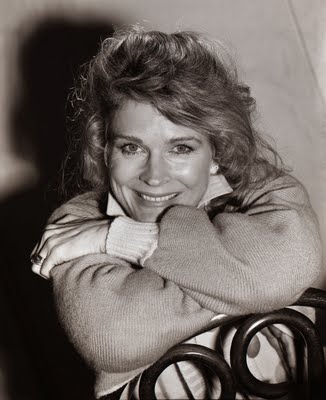 I always prefer to work in the Studio. It isolates people from their environment. They become in a sense…symbolic of themselves. I often feel that people come to me to be photographed as they would go to the doctor or a fortune teller – to find out how they are. So they’re dependent on me. I have to engage them. Otherwise there’s nothing to photograph. The concentration has to come from me to involve them. Sometimes the force of it grows so strong that sounds in the studio go unheard. Time stops. We share a brief and intense intimacy. But it’s unearned. It has no past…no future. And when the sitting is over- when the picture is done – there is nothing left except the photograph…the photograph and a kind of embarrassment. They leave…and I don’t know them. I’ve hardly heard what they’ve said. If I meet them a week later in a room somewhere, I expect they won’t recognize me. Because I don’t really feel I was really there. At least the part of me that was…is now in the photograph. And the photographs have a reality for me that the people don’t. It’s through the photographs that I know them. Maybe it’s in the nature of being a photographer. I’m never really implicated. I don’t have to have any knowledge. It’s all a question of recognitions. I always prefer to work in the Studio. It isolates people from their environment. They become in a sense…symbolic of themselves. I often feel that people come to me to be photographed as they would go to the doctor or a fortune teller – to find out how they are. So they’re dependent on me. I have to engage them. Otherwise there’s nothing to photograph. The concentration has to come from me to involve them. Sometimes the force of it grows so strong that sounds in the studio go unheard. Time stops. We share a brief and intense intimacy. But it’s unearned. It has no past…no future. And when the sitting is over- when the picture is done – there is nothing left except the photograph…the photograph and a kind of embarrassment. They leave…and I don’t know them. I’ve hardly heard what they’ve said. If I meet them a week later in a room somewhere, I expect they won’t recognize me. Because I don’t really feel I was really there. At least the part of me that was…is now in the photograph. And the photographs have a reality for me that the people don’t. It’s through the photographs that I know them. Maybe it’s in the nature of being a photographer. I’m never really implicated. I don’t have to have any knowledge. It’s all a question of recognitions.Richard Avedon It was sometime in the winter of 1986 that the Georgia Straight dispatched me to a mansion in Shaughnessy to photograph Candice Bergen. She was filming an episode of CBC’s highly rated Lies From Lotus Land (why does the CBC not do anything like it now?). The other actors in the episode were Bruno Gerussi, Jackson Davies and a striking and darkish young man I had never seen before. I was off on the wrong foot from the very beginning. I approached Ms Bergen and told her I had been assigned to photograph her. She immediately began to shout at the director and said, “Why was I not informed? I have no makeup. I am not going to pose for anybody without makeup. I am simply not ready for this.” I interjected, “You are perhaps one of the few Hollywood actresses who do not need makeup. You are fine as you are.” She looked at me and melted just a bit and told me, “Wait about 30 minutes and I will pose for you in the attic upstairs.” I went to the attic and found an empty room with a cane back chair. In 1986 I was still crazy about 40s Hollywood lighting and I had brought my portable spotlight. I set it up and used a secondary light (with a grid) as a hair light. She came into the room, sat down and smiled. I noticed her Olympic ski jump nose (sort of like Richard Nixon’s) and I knew she would never do anything but look straight at my camera. I attempted to speak to her. I attempted to connect in some way. All I got was that wonderful smile. I remembered friends who had told me that when she appeared in Mike Nichols 1971 film Carnal Knowledge with Jack Nicholson critics commented that her sexual climax scene was devoid of any passion or emotion. The critics asserted that her father’s (Edgar Bergen) wooden dummy, Charlie McCarthy was capable of showing much more emotion. That very week I had purchased For the World to See – The Life of Margaret Bourke – White. It was Bourke-White who had photographed Gandhi spinning cotton and it was the wide dissemination of that photograph that finally convinced the British to give up their empire in the Indian sub continent. Candice Bergen had played Bourke White in Richard Attenborough’s 1982 film Gandhi. I decided to use a technique that I had never ever tried before. I was going to see if an insult would force Bergen out of her protective shell. “Ms Bergen, I just received a wonderful book on Margaret Bourke-White. After some thought, I have come to the conclusion that you had nothing in common with the photographer. A few years after the film, Bergen had become an amateur/professional photographer and she appeared in film and camera ads in photo magazines. She preceded our very own Bryan Adams but was never even remotely as good as other amateur/professionals like Senator Barry Goldwater, Dennis Hopper, Oscar Peterson and The Police guitarist Andy Summers. I watched her face through the big viewfinder of my Mamiya RB-67 and I noticed nothing. There was not a flicker of acknowledgement of my insult. She kept on smiling. I thanked her. She smiled and left the room leaving with no more knowledge of what she was about than when she had come in. I went downstairs and watched the actors in their roles. I was mesmerized by the performance of the young man. I lingered. During a break I asked him if he would pose for me, “Sure he,” said, “But it will have to be in an hour when our next break is.” I lingered for a bit longer and thought to myself, “I want to go home now. This guy will probably never amount to anything.” I left. And that is how my failure to photograph Candice Bergen was compounded by my not taking a picture of a most willing Keanu Reeves.
Babies, Weddings & Pornography
Friday, August 07, 2009

When I decided to become a photographer and I arrived in Vancouver I told myself there were three things I was not going to do and that was to shoot weddings (and bar mitzvahs), babies and pornography. The first two self prohibitions came out of previous failures or near failures in Mexico. I had shot a couple of weddings in Mexico City and I had been plagued by bad equipment and flash connection problems. Shooting weddings was much too stressful. Re-shoots were out of the question. Someone I knew hired me to photograph his beautiful baby girl. He never told me that she was a Thalidomide baby. When I saw the child, she was missing limbs and fingers. I did not know where to begin. I have stuck to my guns since (sort of). I was ordered by Mac Parry to photograph Susan Musgrave getting married in jail for his magazine Vancouver Magazine. Joey Shithead made a request I could not refuse and I photographed his civil wedding. The only babies I have photographed, and gladly, have been my two granddaughters, Rebecca and Lauren. With pornography it gets a tad more complicated.
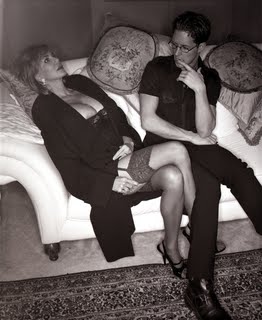
The only porn film I had ever seen before I arrived in Vancouver in 1975 was the inevitable Deep Throat. I had not warmed much to the experience in a movie theatre in San Francisco. I have a lingering memory of two men sitting in front of me watching it while munching on pop corn. I lost all interest in pornography. When I saw a few Penthouse centerfolds that featured women fingering sharp, colourful and shiny pudenda I saw it as pornography. It was the colour and the shine that imparted that difference that separated art and or artsy b+w nudes from these.
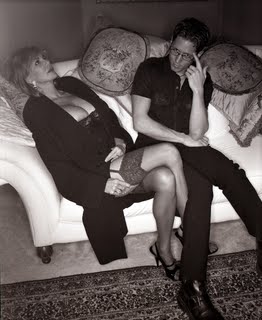
Sometime in the middle 80s Les Wiseman interviewed porn star Marilyn Chambers and I accompanied him to take her portrait. The excuse for the interview which was published in Vancouver Magazine was that Chambers was in town with her country & western band. When we left the Four Seasons Hotel where Chambers was staying with her manager and husband Chuck Traynor I asked Les, “Do they actually do it on film? “ Les looked at me and laughed.
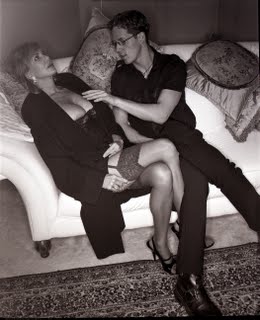
It may have been at least 12 years when I visited Wiseman at his coach house near City Hall. He let me in and went to his TV console and opened its doors. He played a video and he answered my question as if it had only been posed a few seconds before, “See Alex, they really do it.”
But I have always thought that had photography in the 19th century begun with the Lumiere brothers’ photographs in colour and not Daguerre’s Daguerreotype process we would have immediately adopted photography in colour as art. And perhaps I would have looked at those Penthouse centerfolds with more of a discerning eye. There is that residual memory in those of us who are of a certain age that associate b+w nudes as art and the equivalent in colour as smut. I could prove this to the contrary with pictures that I have taken myself, in colour and in b+w but I have a self-prohibition about publishing such stuff or nudes in this blog.
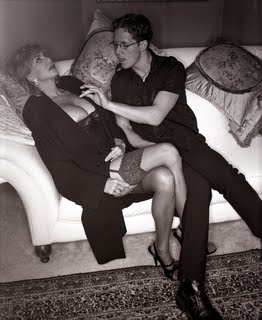
I will be the first to not only admit but assert that the photography of the undraped human body is high in sexual content. The photographer who says, “I love how the human form can mimic a Sahara Desert sand dune,” is in complete delusion. If it weren’t so the photographer would be happily taking pictures of undraped dromedaries.
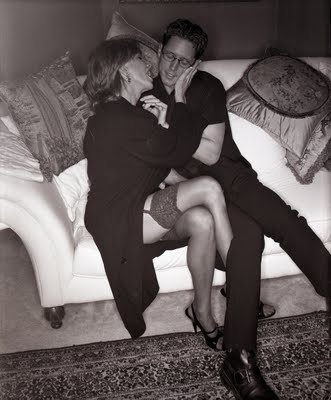
I have photographed many nudes in my years in Vancouver and I even teach a class at Focal Point called the Contemporary Portrait Nude. I gave it that title because to me the nude has never been about parts but about the humanity of the person posing. Sometimes the face is not there but there are ways of implying it. It is only of late where I have sensed a waning in my passion for photography of the undraped. It must have a lot to do with being as old as I am. The concept of getting into bed with a good book and a large mug of tea really is beginning to supersede any ideas of sexual frolicking.
Today I found these pictures of a woman whom I will call as J.M. It was in the middle 90s that our leading newspaper gossip columnist called me up and told me something like this, “This attractive woman I have written about wants some pictures taken of her. I have given her your name. She will call you. Don’t fret about anything as she has money.”
The woman indeed did call and she made her appointment for me to photograph her in her condo apartment. She gave me the impression she wanted me to take racy photographs. When I got there two very good looking men opened the door. J.M. was a mature woman. She was voluptuous and maybe her surgeon had improved beyond the perfect nose she had.
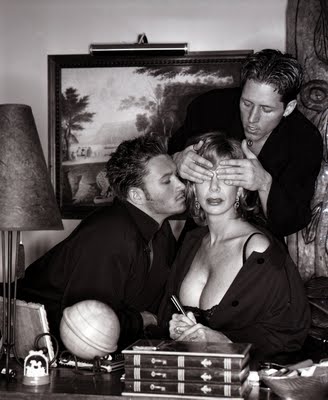
I tried to imagine some sort of scenario involving the two young men and J.M. but my failure was based both on shock; I had never done this sort of thing before, and my desire to make the woman look her best. Baring her breasts and whatever else she may have wanted to expose was something I didn’t think was a good idea. I failed because I was much too conservative and naïve. Looking back at these pictures I see a potential that I squandered. J.M. was having some fun (the boys were having fun, too) and wanted it on film but I was too dense to understand this. I may have injected some humour but most of it was unintended. Whatever J.M. wanted me to photograph it was not pornography.
Looking at the pictures now they seem almost silly, particularly when compared to the images that my 11 year-old granddaughter is capable of finding in the internet. She has seen just about every nude I have I taken and she has a mature adult approach to what I have shot in my past.
But as propriety and manners erode and as TV programs, films and standard on line content get racier and racier, the border between what is perceived as sexy to what is pornographic becomes that much more muddled. When I am asked what I consider pornography to be I always answer, “I vowed never to shoot babies, weddings and pornography. I have avoided the first two and tried on the third." Every time I try, I realize that to shoot pornography one must park one’s good taste. But good taste always prevails and my would-be pornography atempts descend to the realm of sexy or, as you see here, silly. I have long ago given up in punching people in the nose when they tell me, “Alex your nudes are tasteful.” Perhaps it is not too late to change what could well be my epitaph, "He was indeed tasteful".
Vanesa, The Dark Lady From Belorusse
Thursday, August 06, 2009
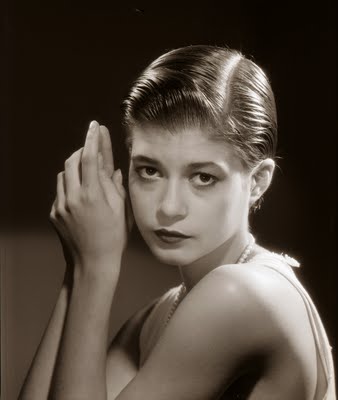 She was born in 1911, like Ginger Rogers and Jean Harlow, but she didn't have their platinum look: she was the dark lady from Belorusse.
She was born in 1911, like Ginger Rogers and Jean Harlow, but she didn't have their platinum look: she was the dark lady from Belorusse.
The Dark Lady From Belorusse, Jerome Charyn
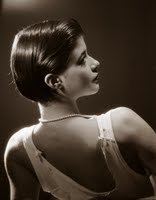
Swimming & Not Drowning
Wednesday, August 05, 2009
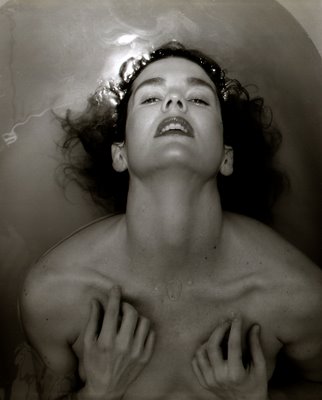 Not too long ago I received an unusual invitation from a renowned local designer to help in a workshop that was to address the declining esprit de corps of the arts staff of one of our city’s best design institute/college. I attended some of the talks and these dispirited professor/artists spoke of classes that had students that spanned ages from 19 to over 50. “How do you weigh, the perhaps, mediocre portfolio of an older student when you consider what could be their contribution in maturity and having lived?" said one professor. They spoke of students who were not interested in drawing, painting or life drawing classes. They wanted to skip all that “manual stuff”. They wanted to do what they believed was the future of art and design, the computer. These professors had so much bureaucratic stuff to do, and forms to fill out that the act of teaching was almost curtailed. I knew of one art teacher who was suffering the effects of artistic revisionism. “I am not allowed to stress the skills and stature of Picasso, the artist, because he ill-treated the women of his life.” Not being part of an arts institution I was at a loss of words as to what I could possibly contribute to help the people who were facing me. But something suddenly popped into my head and I asked, “How many of you have some sort of personal project that you are currently working on? How many of you who are photographers are taking pictures? How many of you who paint are painting?” The raised hand count was sparse. I was perhaps rude or even cruel in then saying, “Unless you have a personal project how can you possibly inspire your students to learn?” As my photographic profession fades into irrelevance and I face students at local photography schools I feel a bit of that depression and stress of those professors I write about above. I tell my wife, “How can I teach someone to swim when I am drowning?” 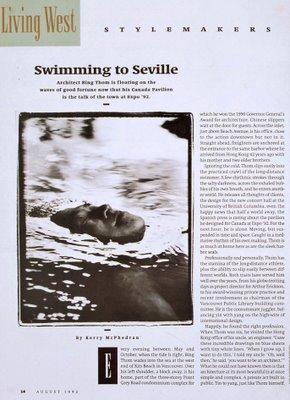 A few days ago my friend Abraham Rogatnick placed in my hands a pristine Leica IIIf. It does not have a coupled rangefinder so it is a pain to focus. But it has that solid heft of a camera that was made when some cameras could also be and were works of art. My Leica (I like the ring of that!) is not going to be a museum piece. I am going to use it. I might load it with Kodak Tri-X or Plus-X. But I will use it. If I have been low in spirits all these months it has to do with the fact that I have not been practicing what I preach. I have always had a personal project until now. I have not taken pictures for fun except the few, the very few, of my granddaughters. This has to change. As an example many years ago I had a show of women in bathtubs. This was a personal project. I was hired to photograph architect Bing Thom for Western Living. It was about the Canada Pavilion he had designed for the Expo 92 in Seville, Spain. I asked Thom, “Have you designed any houses in Vancouver with a swimming pool?” His affirmative answer prompted me to photograph him floating in a pool. My picture was so well received that in that year I won a Western Magazine Award for the best editorial photograph. This is ample proof that the personal project nurtures inspiration to perform in an unusual and satisfying manner for those projects that may seem to some as being humdrum. I believe as the commercial photographer that I am that if I have a personal project that I do for no purpose except to please myself I will soon find a way of doing it again for very good money. Art and commercial photography can live side by side, harmoniously.
The Dark Side of Nina Gouveia
Tuesday, August 04, 2009
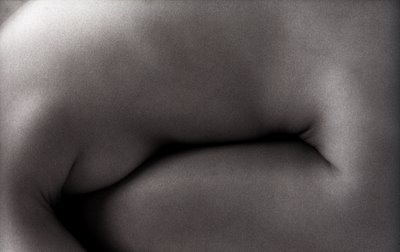
It’s not only painters that have pigment periods (blue, red, etc) or brightness and darkness periods. Additionally those of us who printed (and I still print) b+w photographs in a darkroom had our high contrast periods and our low, milky skin ones. When I look back at some of my vintage prints I am amazed at how dark or how light they are.
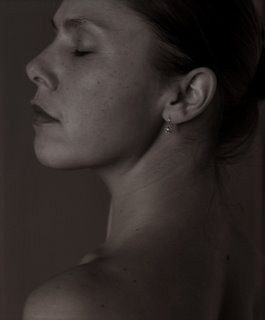
It seems that accuracy was not important as much as drama. Here are some pictures of that wonderful subject of mine who had to go to Spain and now I can only look at the many negatives that I have of her that never saw the light of day. A scanner and a lonely evening combine perfectly for the task of finding gems I did not notice the first or second time around. Here are some scanned really dark. I am pleased with their rich darkness. I will have to go to my studio and print these dark on good photographic paper.
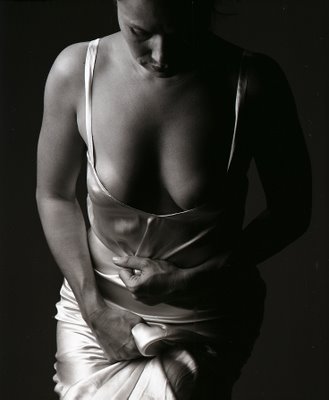 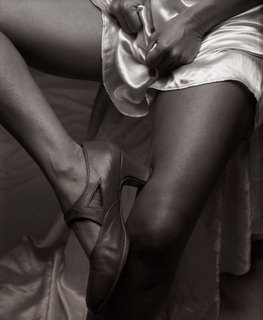
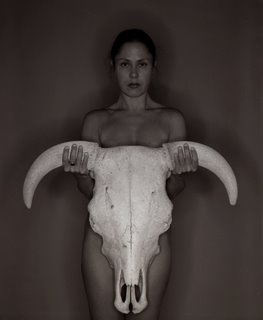 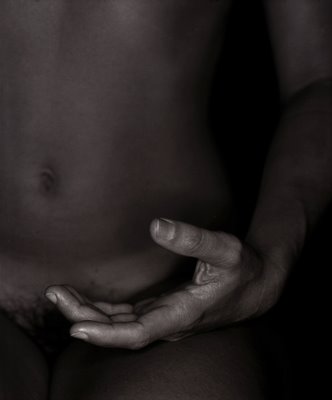
|




























